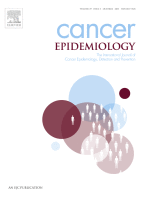 To one reader of a paper on a nerve cancer, the researchers, based at a hospital in China, seemed to have found a very large number of cases of a rare cancer to study. That observation triggered an investigation into the paper that led to its retraction — and the concern that the authors in the paper never did the research at all.
To one reader of a paper on a nerve cancer, the researchers, based at a hospital in China, seemed to have found a very large number of cases of a rare cancer to study. That observation triggered an investigation into the paper that led to its retraction — and the concern that the authors in the paper never did the research at all.
The authors say they recruited 156 patients who had a particular kind of cancer that affects the tissue around nerves, known as malignant peripheral nerve sheath tumors. For context on how rare that is: Other researchers found a mere 1,182 new cases over a nearly four-decade period in the U.S. The study, according to the methods section of the paper, was supposedly done with patients who had a specific type of the disease, and who were
consecutively recruited from Wuhan Union Hospital, Huazhong University of Science and Technology in Wuhan (Hubei, China) between July 2000 and November 2012
According to the retraction note for “Common genetic variants in the microRNA biogenesis pathway are associated with malignant peripheral nerve sheath tumor risk in a Chinese population,” the hospital where the work was done never treated all of those patients:
This paper has been retracted at the request of the Editor-in-Chief.
The Editors of Cancer Epidemiology were recently contacted by a reader who stated that the number of cases of malignant peripheral nerve sheath tumour (MPNST) reported in the paper referenced above was unfeasibly high and, furthermore, that the reader had evidence that the data reported in the paper was not true. The Editors contacted the authors for an explanation. The Editors of Cancer Epidemiology then received a communication from the Chief of the Department of Hand Surgery at Wuhan Union Hospital, the institution where the authors stated that the research took place, who confirmed that the hospital had not treated the number of patients reported in the paper and that there was no evidence that the research on MPNST was conducted at all.
The authors of the paper have not responded to the Editors.
A spokesperson for Elsevier, which publishes the journal, told us:
[T]he retraction notice itself is all the Journal feels it should say about the matter. Thank you.
The authors have another paper that includes part of the same group of potentially imaginary patients, “Identification of serum microRNAs in genome-wide serum microRNA expression profiles as novel noninvasive biomarkers for malignant peripheral nerve sheath tumor diagnosis,” published in Medical Oncology.
We asked the editor in chief of Medical Oncology, Kenneth Pienta, if the journal was taking a second look at that paper. He told us:
This is on our radar and is the subject of an ongoing investigation.
We tried to reach the corresponding author Yuxiong Weng, but an email to the address listed on the paper bounced back. We were unable to reach the Chief of the Department of Hand Surgery at Wuhan Union Hospital.
Like Retraction Watch? Consider making a tax-deductible contribution to support our growth. You can also follow us on Twitter, like us on Facebook, add us to your RSS reader, and sign up on our homepage for an email every time there’s a new post. Click here to review our Comments Policy.
2014 Impact Factor: 2.711
Publishing in an IF journal is financially remunerated in China, but the value differs for different institutes. Based on this, I have three queries:
a) Will the authors return any funds received for this non-existent “research”, including any direct remunderation based on the IF?
b) How will Elsevier and Thomson Reuters adjust the IF of the journal based on this and other retractions in other journals? Or can we only expect an “adjustment” in the 2015/2016 IF?
c) So, how many papers coming out of China in cancer research or otherwise are totally concocted? In this case, it referred to a “rare” cancer, but how do editors really know, especially for other fields of research?
Same “clever” group just published another interesting paper: “Common genetic variants in microRNA processing machinery genes are associated with risk and survival in patients with osteosarcoma.” in Mol Genet Genomics 2015 Feb 13.
Yuxiong Weng, Yanhua Chen, Jianghai Chen, Yutian Liu, Tengfei Bao
Hand Surgery Department, WuHan Union Hospital, Huazhong University of Science and Technology, Wuhan, Hubei, 430030, China, [email protected].
This is a case-control study including 143 patients with osteosarcoma and 143 age- and sex-matched controls was conducted to evaluate the genetic susceptibility of 38 SNPs in ten miRNA processing machinery genes in osteosarcoma development and survival in China
I hope that the journal editors will ask the hospital to investigate the data.